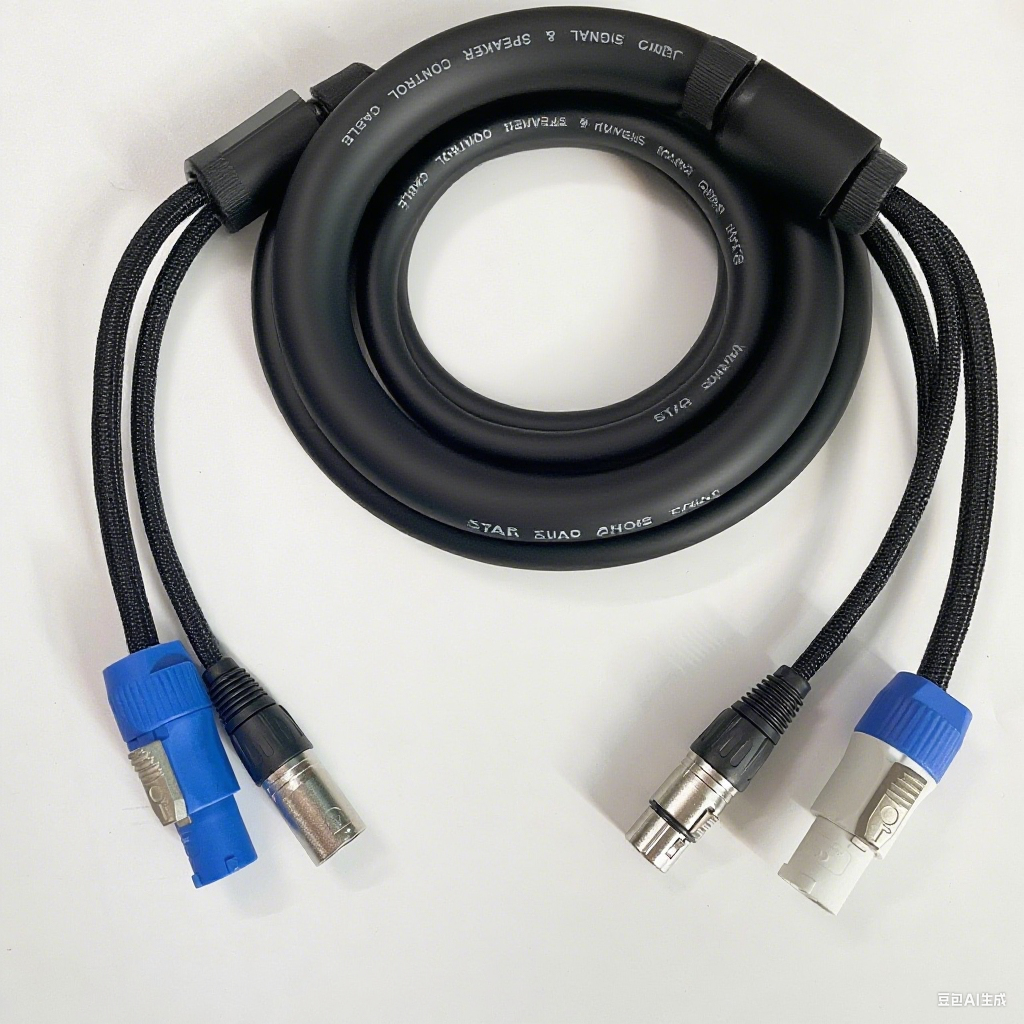If you’re involved in stage lighting setup, you know how crucial efficient wiring is for seamless performances. Enter the Powercon and DMX Hybrid Cable—a game-changer that combines lighting power transmission and signal transmission in one. Let’s dive into its features, specs, and how to choose the right one for your needs.
Key Features
What makes this hybrid cable a must-have for stage setups? Here are its standout benefits:
- Integrated Design: By merging power and signal cables into one, it simplifies stage wiring, reduces cable management headaches, and keeps the setup neat and organized. No more tangled messes of separate lines!
- Easy Installation & Use: One cable handles both power and signal needs, eliminating the hassle of laying separate cables. This cuts down installation time, reduces labor costs, and boosts overall efficiency.
- Strong Anti-Interference: Equipped with robust shielding, it minimizes external electromagnetic interference. This ensures stable transmission of lighting control signals, keeping your moving lights and fixtures operating flawlessly.
Specifications & Parameters
Let’s break down the technical details to help you understand what goes into this hybrid cable:
Power Line Specs
- Core Count: Typically 3 cores.
- Material: Mostly bare copper wire (known for excellent conductivity).
- Wire Gauge: Common options include 14AWG and 16AWG, designed to match the power requirements of different stage lights.
Signal Cable Specs
- Protocol: Built for DMX512 signals, the industry standard for stage lighting control.
- Core Configuration: Usually 3-core XLR (male/female) wires, with copper cores for reliable conductivity and signal performance.
Choosing the Right Length
Picking the perfect length for your hybrid cable requires balancing practicality and performance. Follow these guidelines:
- Core Principle: “Reserve redundancy, avoid excessive length.”
- Basic Length: Start with the actual straight-line distance between your equipment (e.g., from fixture to console or power box). Ensure the cable connects naturally—no pulling or tightness.
- Redundancy: Add 10–20% extra length to the basic length. This handles last-minute stage adjustments, like repositioning fixtures or routing around obstacles.
Example: For a 5-meter straight-line distance, opt for a 6–7 meter cable (1–2 meters of redundancy). - DMX512 Signal Limits: Without a signal amplifier, DMX512 signals work best within 30 meters. Beyond that, you may experience signal loss, delays, or interference—harming lighting precision (e.g., strobe sync issues, color inaccuracies).
- Long-Distance Solutions: For distances over 30 meters, avoid using a single extra-long cable. Instead, use signal splitters or repeaters (e.g., 2 x 20-meter cables + 1 repeater for a 40-meter span).
Material Matters
The cable’s materials directly impact conductivity, signal stability, durability, and anti-jamming capabilities. Look for:
- Power/Signal Cores: Oxygen-free copper (ensures stable conductivity and long life).
- Insulation Layer: High-quality materials to resist overheating.
- Outer Sheath: Durable, flame-retardant, waterproof, frost-proof, and UV-resistant—built to withstand harsh stage environments.
Whether you’re setting up a small venue or a large concert stage, the Powercon and DMX Hybrid Cable streamlines wiring, enhances reliability, and simplifies your workflow. Choose wisely, and let your lights shine without a hitch!
